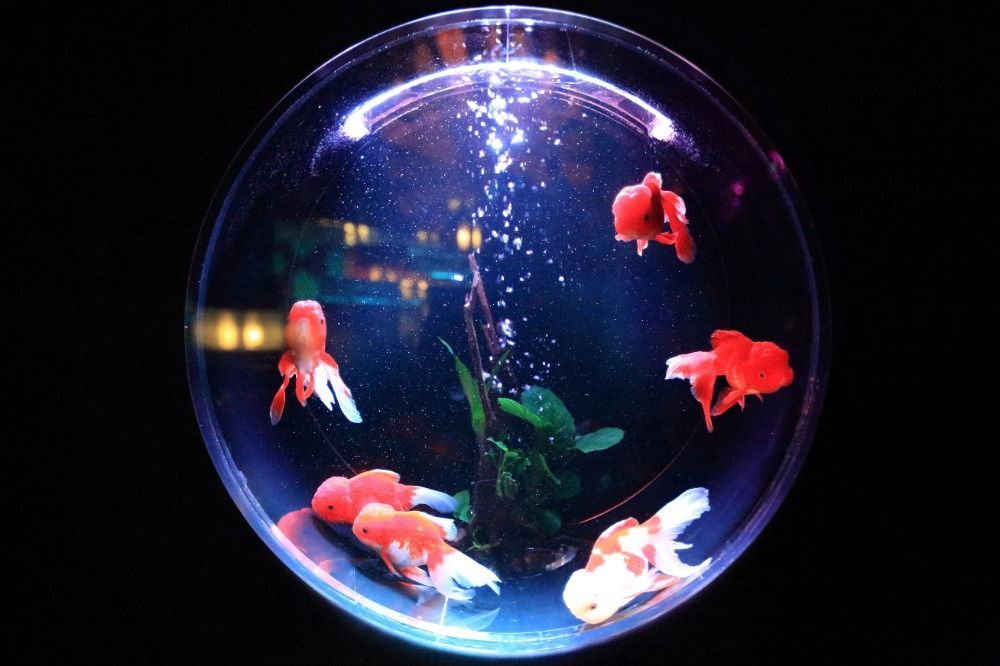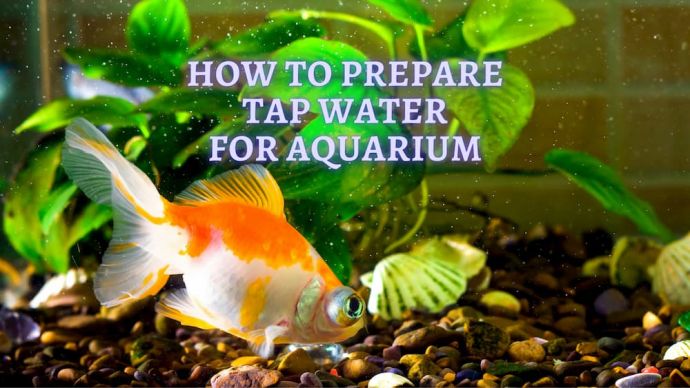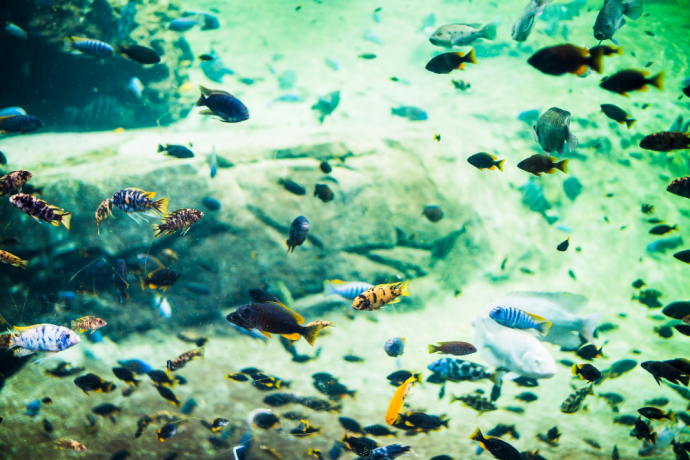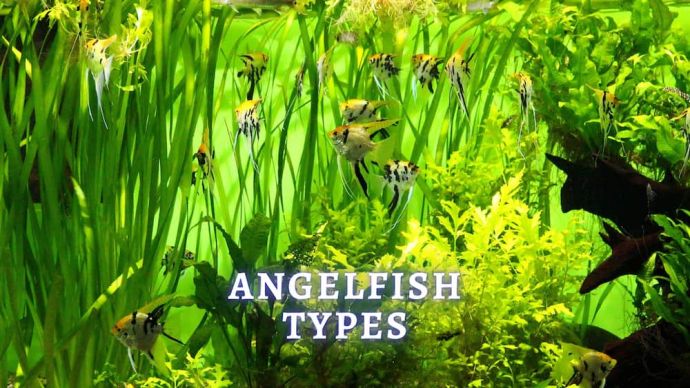Why can’t Freshwater Fish live in Saltwater
Written by:
Author: Vicki Smirnova
Vicki Smirnova is a professional writer and editor who adores animals and helps readers get along well with their pets. She has been working in digital media for more than 5 years and has great experience writing content about lifestyle, including pets. Vicki specializes in dog health and nutrition, cat feeding, dog training. She is an aquarium lover and is passionate to write about fish care at home. Also, Vicki headed several websites and worked as a news editor.
View all 244 articlesLearn about our editorial process and veterinary review board.
Viewed: 279
Updated on: 03/09/2021
Two-thirds of the earth’s surface is covered by water, most of which are seas and oceans. The difference between fresh and seawater is easily felt by anyone who swims in the sea. In each liter of seawater, about 1.2 oz of salt is dissolved, and in freshwater, there is no more than 0.3 oz. Fish very well distinguish this difference. They are so highly adapted to their environment that changing freshwater to saltwater (and vice versa) is disastrous for them. Therefore, freshwater and marine inhabitants cannot live in the same aquarium.
The difference between Marine and Freshwater Fish
Fish live in almost all reservoirs of the planet, both fresh and salty. What is the difference between marine fish and freshwater inhabitants? To describe all the differences, you will need a lot of scientific information. First, let’s look at the general features and variations.
Freshwater fish submerged in seawater die due to the exosmotic effect of saltwater on their blood and other body fluids. The determining role in this process belongs to the water-salt exchange. Each cell of the body has a shell; it is semi-permeable, i.e., it passes water and salt selectively. The water-salt transfer of cells is determined primarily by the osmotic pressure of blood and cells.
Osmosis is the movement of liquid molecules through a semi-permeable membrane from a low concentrated solute to a highly focused solute. Due to osmosis, underwater inhabitants need to osmoregulate, which maintains the right amount of water in their bodies. Some fish need to drink water, but all have to urinate frequently. Freshwater inhabitants and saltwater fish survive according to how much salinity their body can sustain.
In marine fish, the total amount of salt in the blood is much lower than in seawater; the pressure of the internal environment is less than the external pressure. In freshwater fish, the amount of salt in the blood is higher than in freshwater. The influence of the internal environment is more durable than the weight of the external one. If you want to preserve the water-salt composition and osmotic pressure level, it is necessary to remove excess water from the body and simultaneously retain salts.
Therefore, freshwater fish have a robust development of the kidneys. The loss of salts due to natural processes and through the skin is compensated in freshwater inhabitants by obtaining them from food due to the specialized activity of the gills (gills absorb Na and SL ions from freshwater) and the absorption of salts in the renal tubules.
Sea fish steadily lose water – through the skin, gills, urine, and excrement. Preventing dehydration and maintaining osmotic pressure at the desired level (i.e., lower than in seawater) is achieved by drinking seawater, which is absorbed through the walls of the stomach and intestines, and excess salts are released by the guts and gills.
READ MORE: Lower Nitrates in Aquarium
Freshwater and Saltwater Fish
There are fish that can live in both fresh and saltwater. This type is called euryhaline fish. These creatures can migrate in both reservoirs for a specific time.
There are two types of euryhaline fishes: anadromous and catatonia.
Anadromous fish are born in freshwater but live in salt water, returning to freshwater to lay eggs. Catadromous fish live in freshwater, but they have to go out to sea through rivers to spawn.
What is the difference between Freshwater and Marine Aquariums?
The main difference between marine and freshwater aquariums is that marine aquariums are much more sensitive to changes in the aquatic environment. The leading indicators of marine aquariums that need to be continuously monitored and maintained are the level of acidity (pH), the level of calcium and other trace elements, salinity, and water temperature.
If you are going to buy your first aquarium, give preference to a freshwater reservoir; it does not need to carefully maintain the constancy of the water composition, temperature conditions, and other factors as in a marine aquarium. Freshwater inhabitants are more unpretentious and suitable for beginners, while the sea reservoir requires professional care.
READ MORE: Best Live Plants for Aquarium
Conditions for Freshwater Fish in an Aquarium
Species features of saltwater and freshwater habitats combine aquariums into two main types: marine aquariums and freshwater aquariums. The salt content in the water and the species composition of fish and other inhabitants of the underwater world adapted to it is the main difference, but this is not the only feature that you need to know about marine and freshwater aquariums.
Freshwater aquariums are home to those species of fish and animals that usually live in freshwater ecosystems: ponds, swamps, lakes, or rivers (discus, haplochromis, neon, cichlids, guppies, barbuses, and others). Such aquariums are usually populated either by one type of fish or provide “cohabitation” of several species.
If you look at the complexity of maintaining aquariums in general, then ensuring the normal life of a freshwater aquarium will be easier to implement. Even if you look at the fact of changing the water in the aquarium: in freshwater, it is much easier to replace stagnant water (one-third of the total volume of water) and add new, settled water that does not require additional processing and selection of the level of salt and calcium. The same process of changing water in a marine aquarium can be dangerous and destructive for its inhabitants and requires a more complicated procedure.
READ MORE: Best Fish Tank Canister Filter
Freshwater inhabitants do not require special food since they can be grown in artificial conditions from birth and are used to eat dry food. Feeding these fish will not involve additional difficulties, which will be a plus for a novice aquarist. For sea fish, you need characteristic seafood that they used before in their natural environment. And training them to feed will be a problem; also, these fish need a special diet. The diet is necessary for them to reduce stress during changes in their diet. After all, such stress can lead to the fact that the fish will weaken and die.
 Freshwater Fish The Best Freshwater Aquarium Fish: TOP-15 Freshwater Fish for Fish Tanks
Freshwater Fish The Best Freshwater Aquarium Fish: TOP-15 Freshwater Fish for Fish Tanks - 232
- 0
 Freshwater Fish Snail Eggs in Aquarium and What to Do with Them and How to Remove if Needed
Freshwater Fish Snail Eggs in Aquarium and What to Do with Them and How to Remove if Needed - 92
- 0
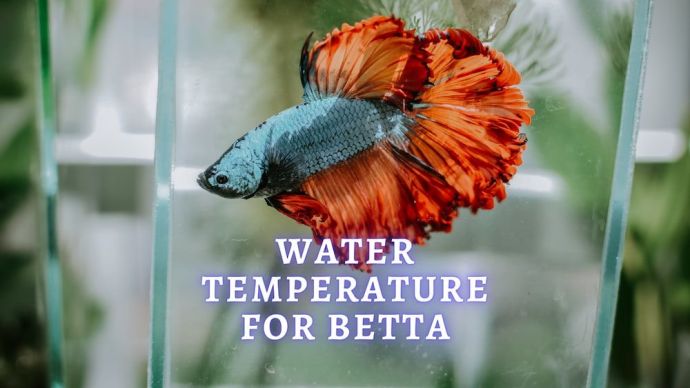 Freshwater Fish Betta Fish Temperatures: Guide To The Perfect Betta Fish Water Temperature
Freshwater Fish Betta Fish Temperatures: Guide To The Perfect Betta Fish Water Temperature - 253
- 0











